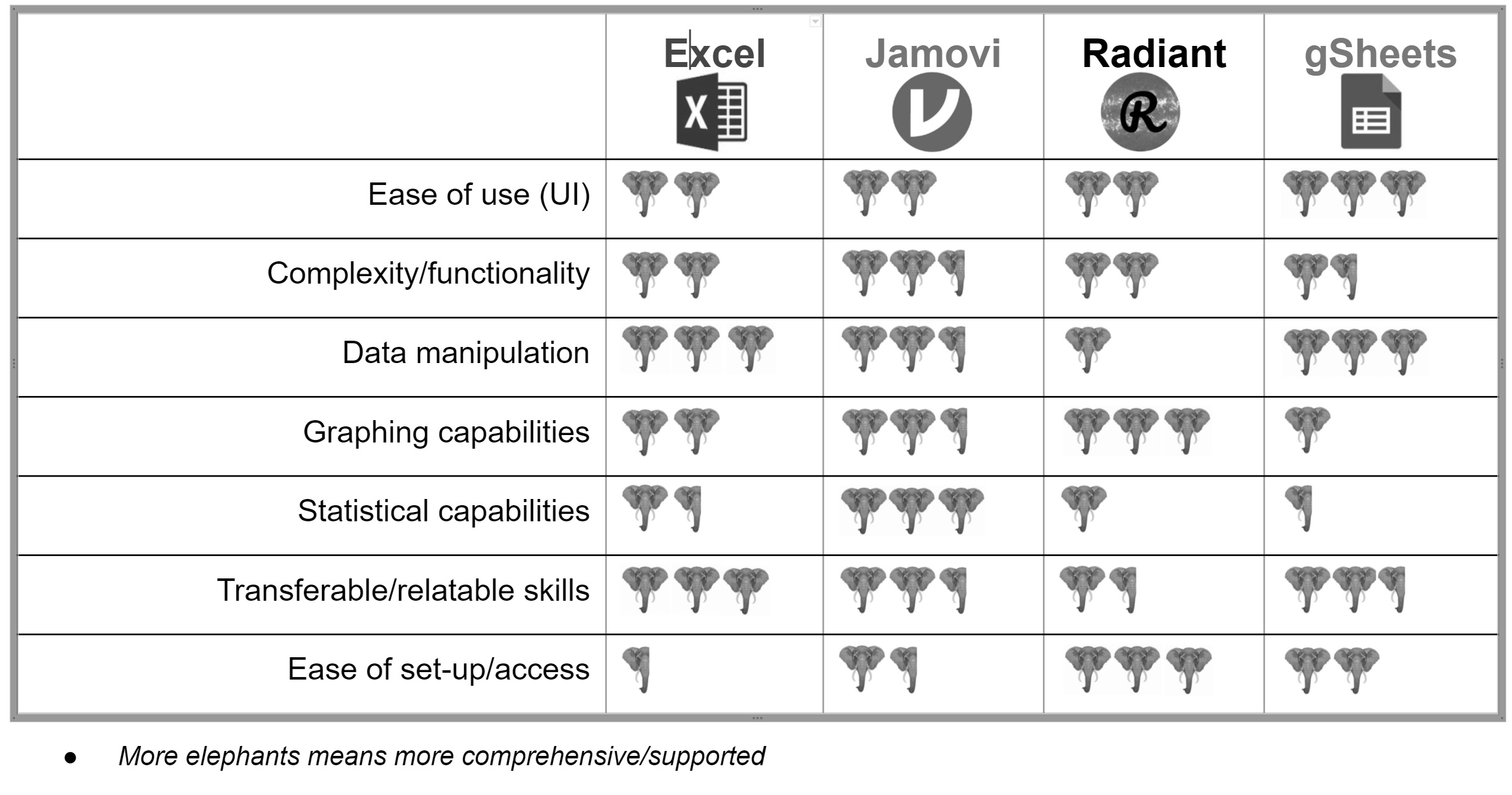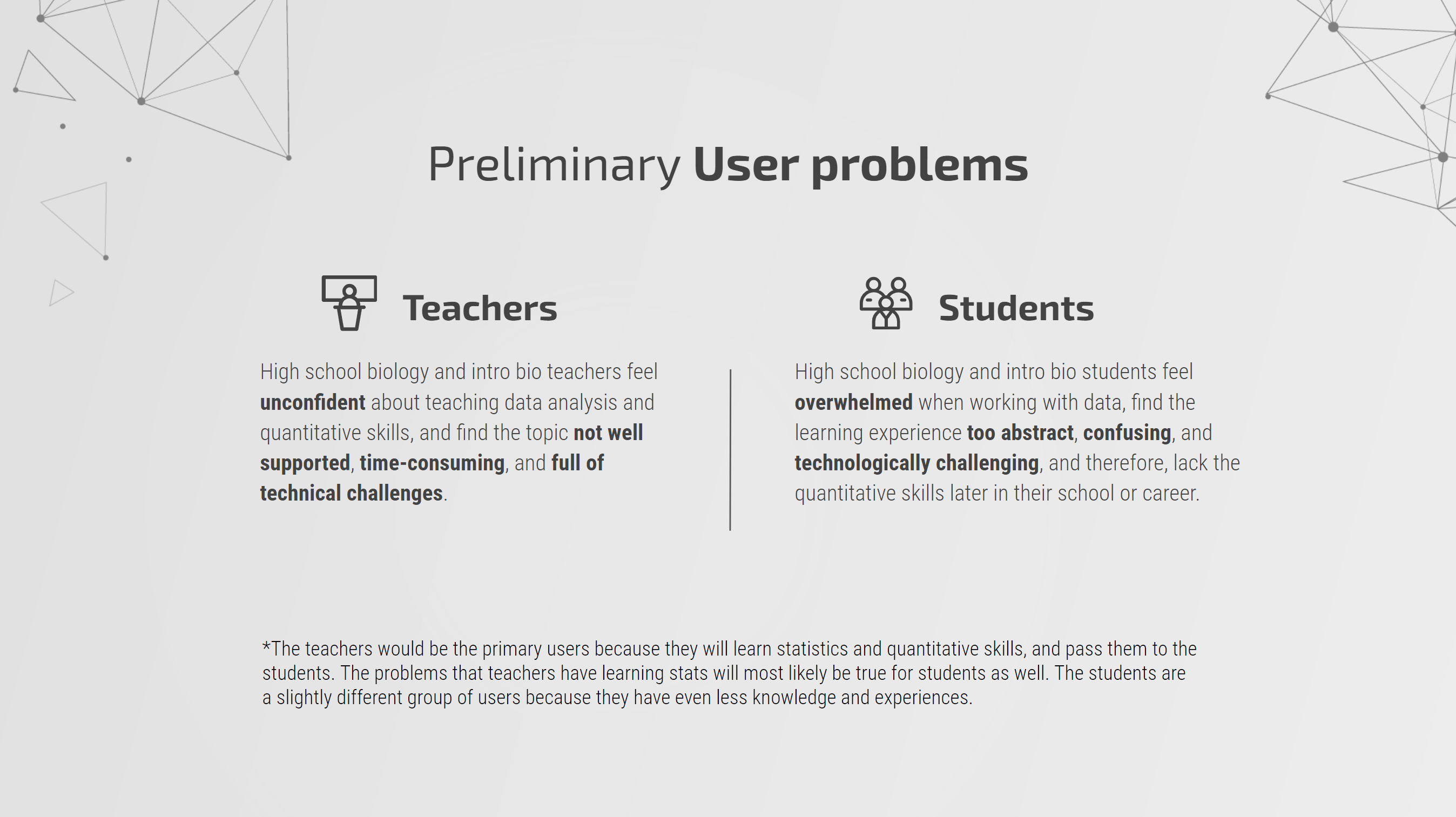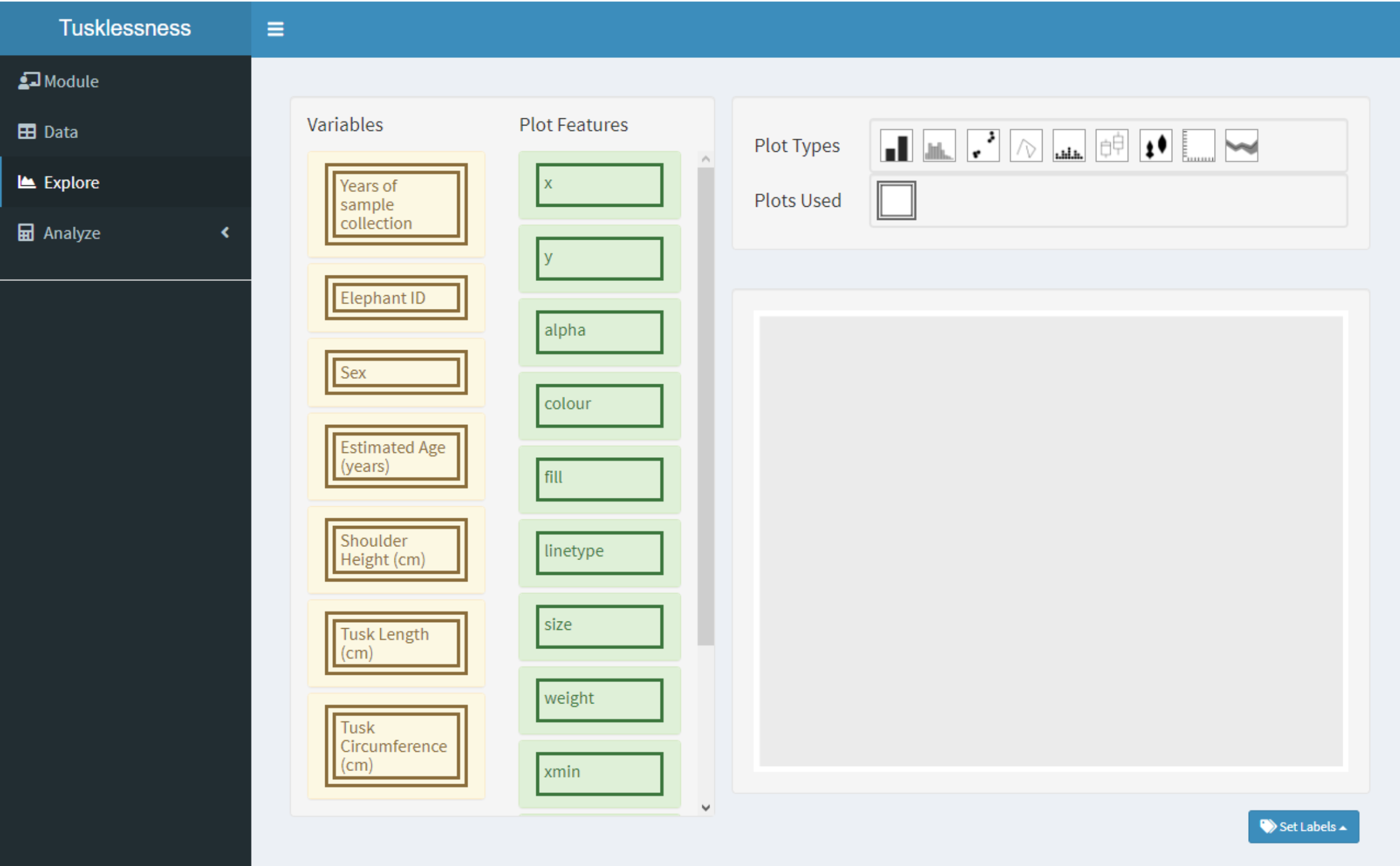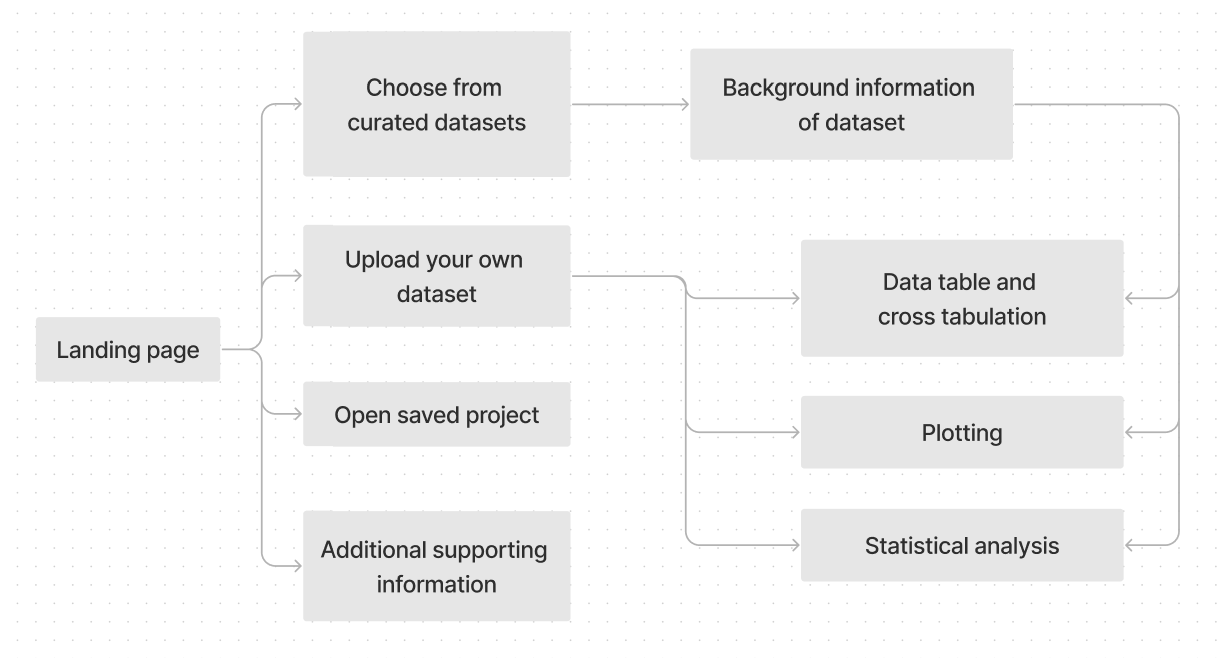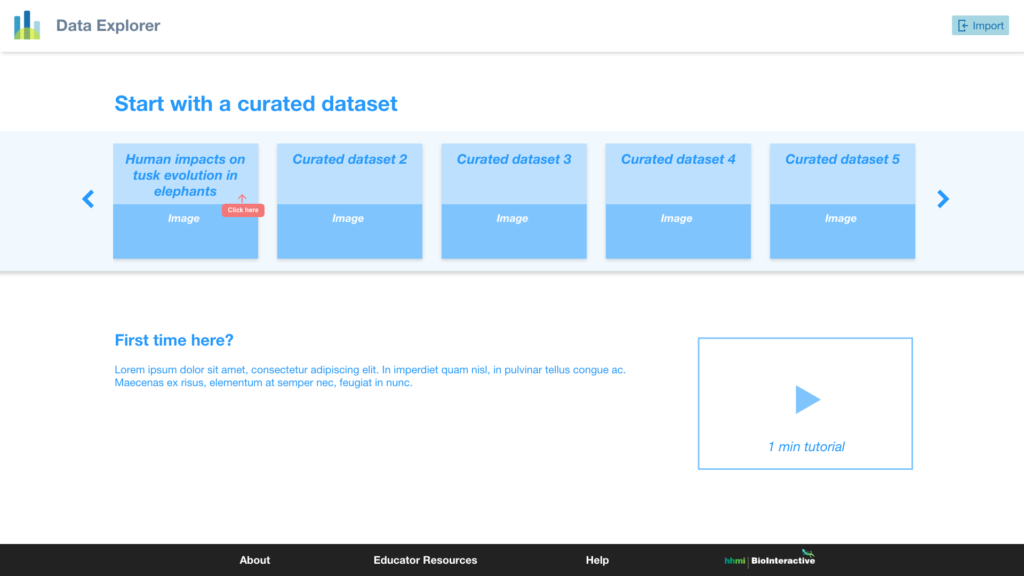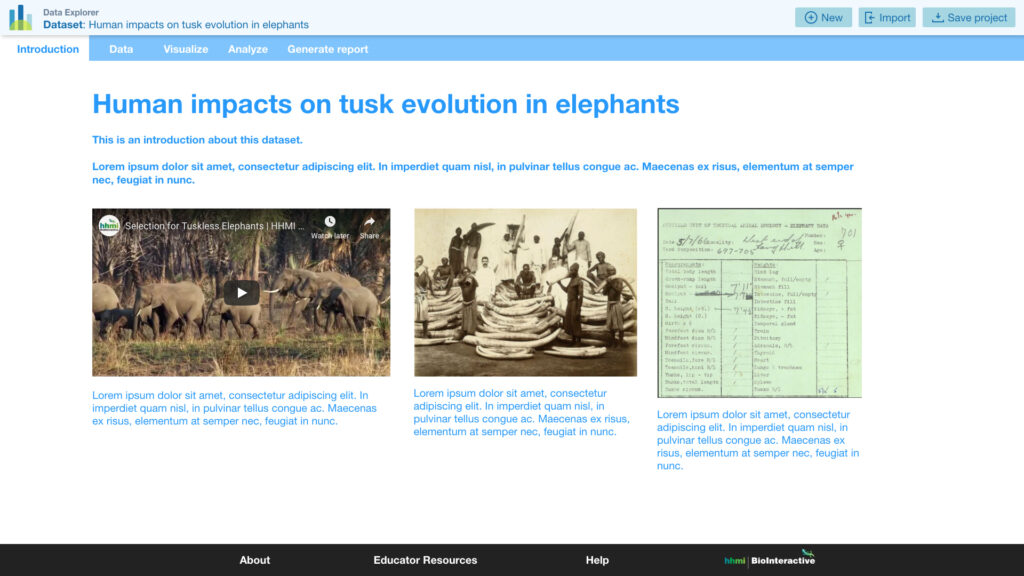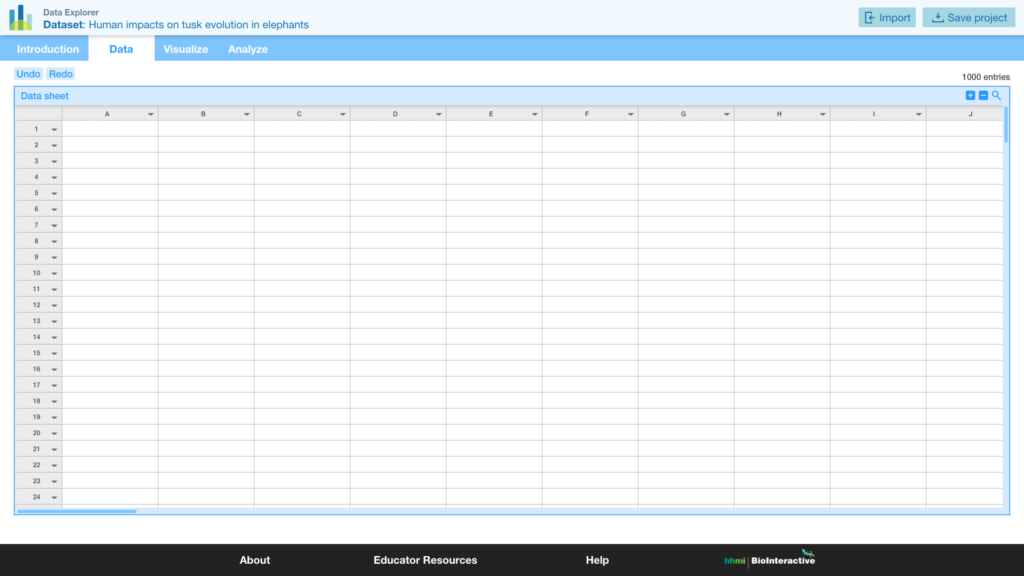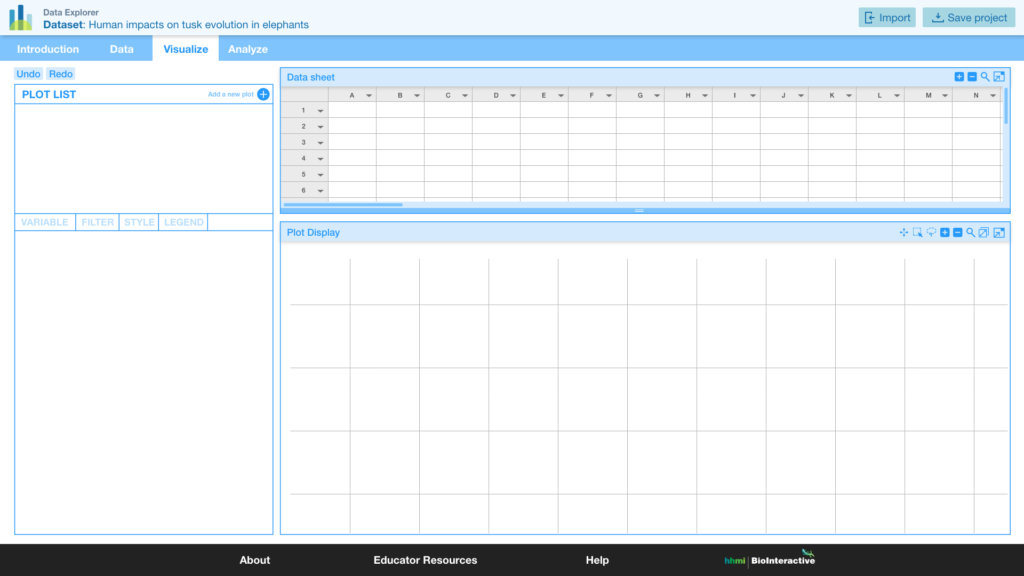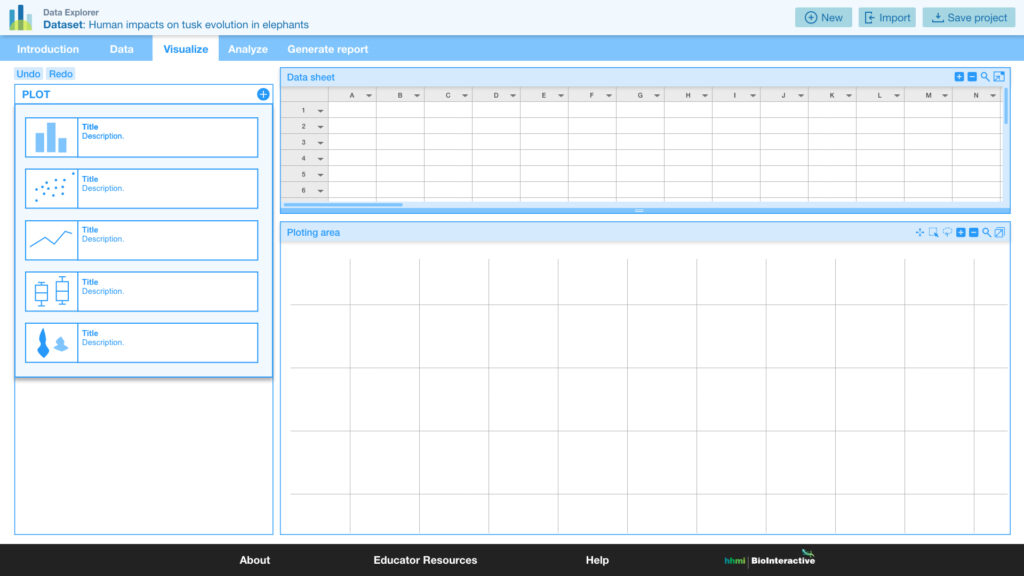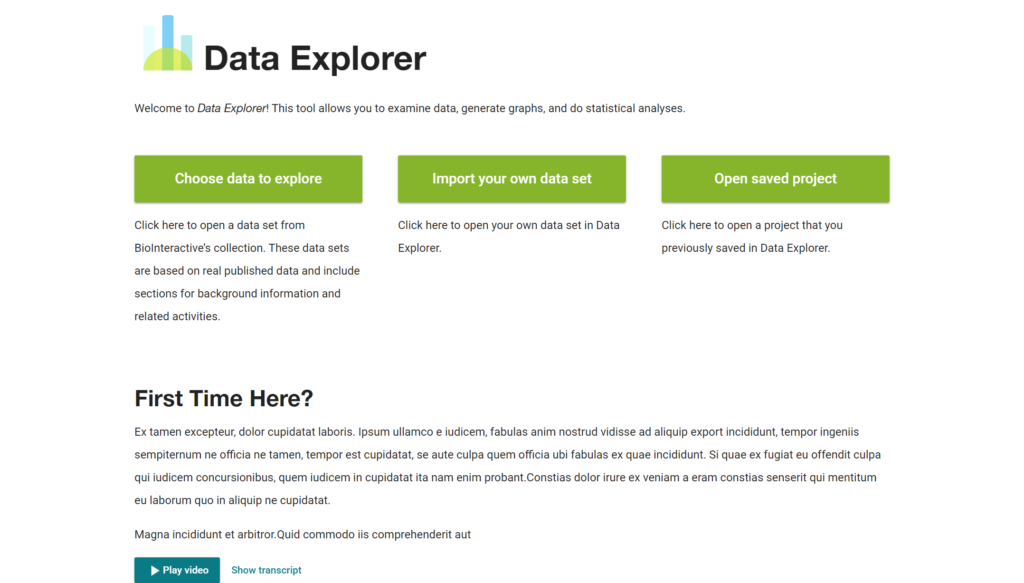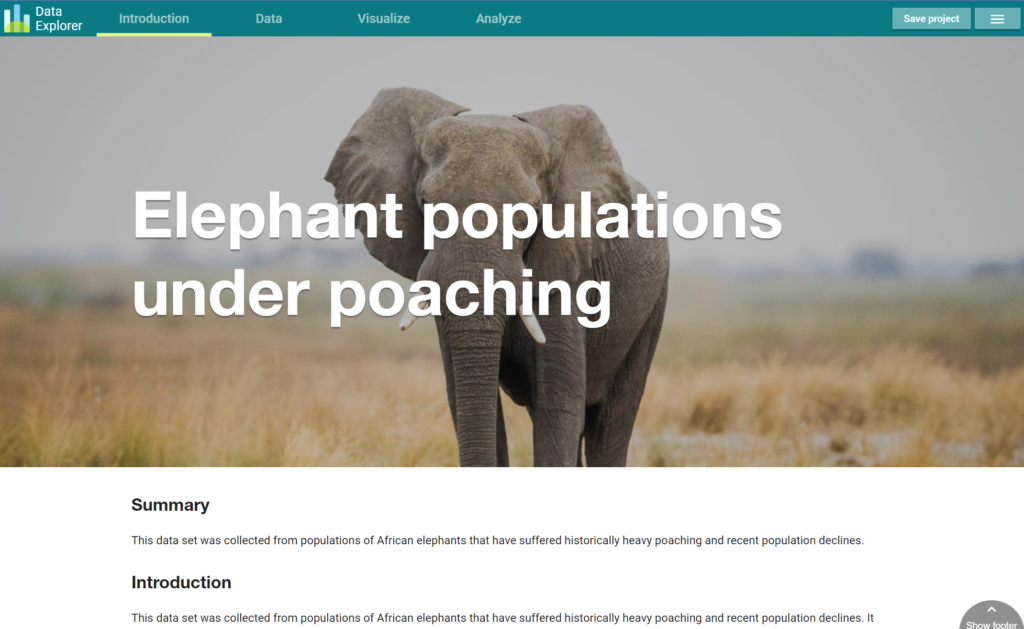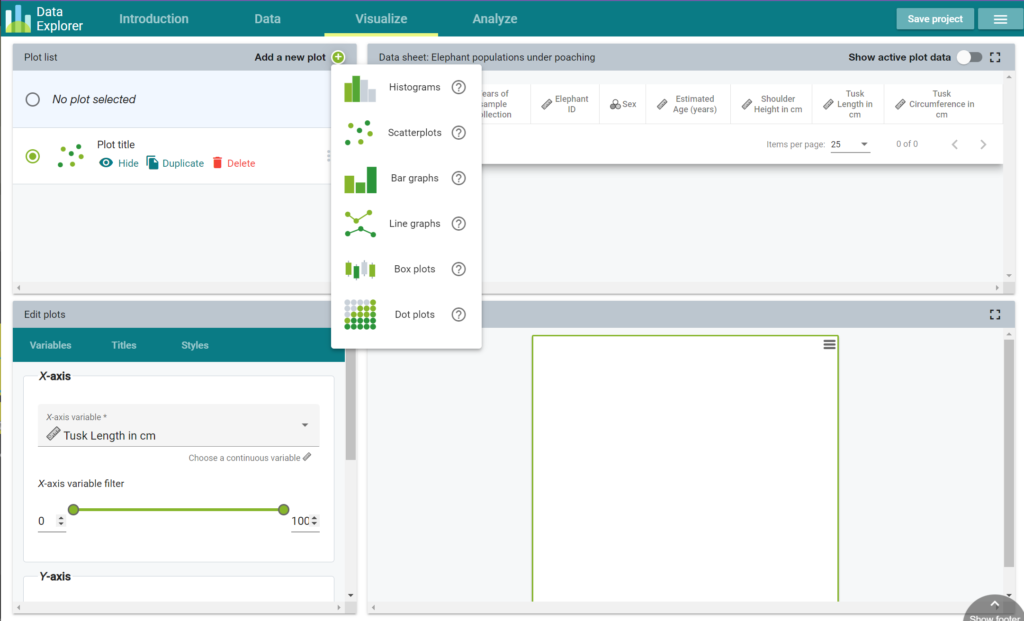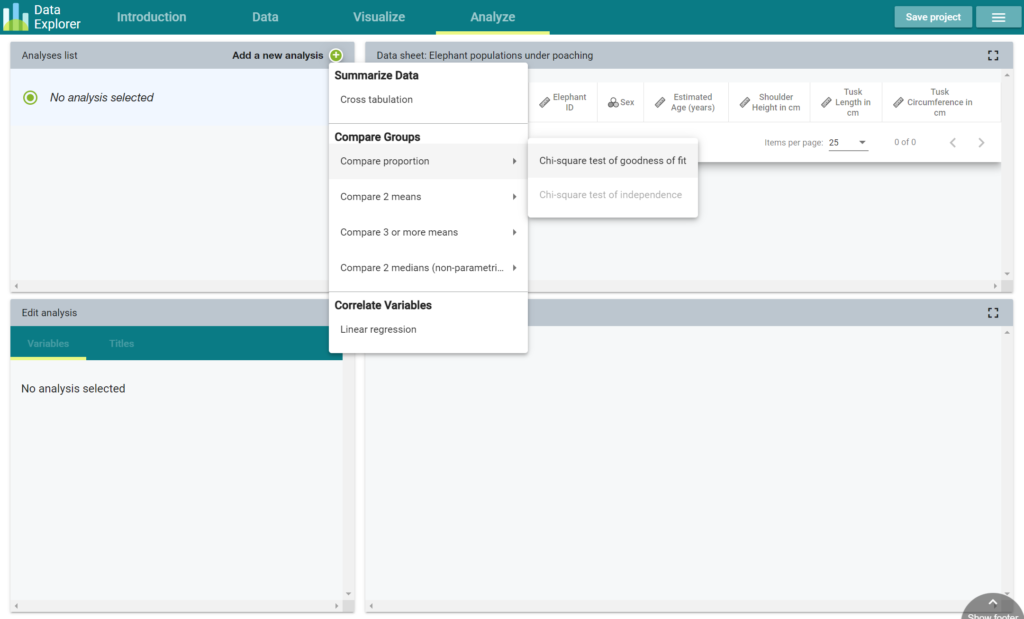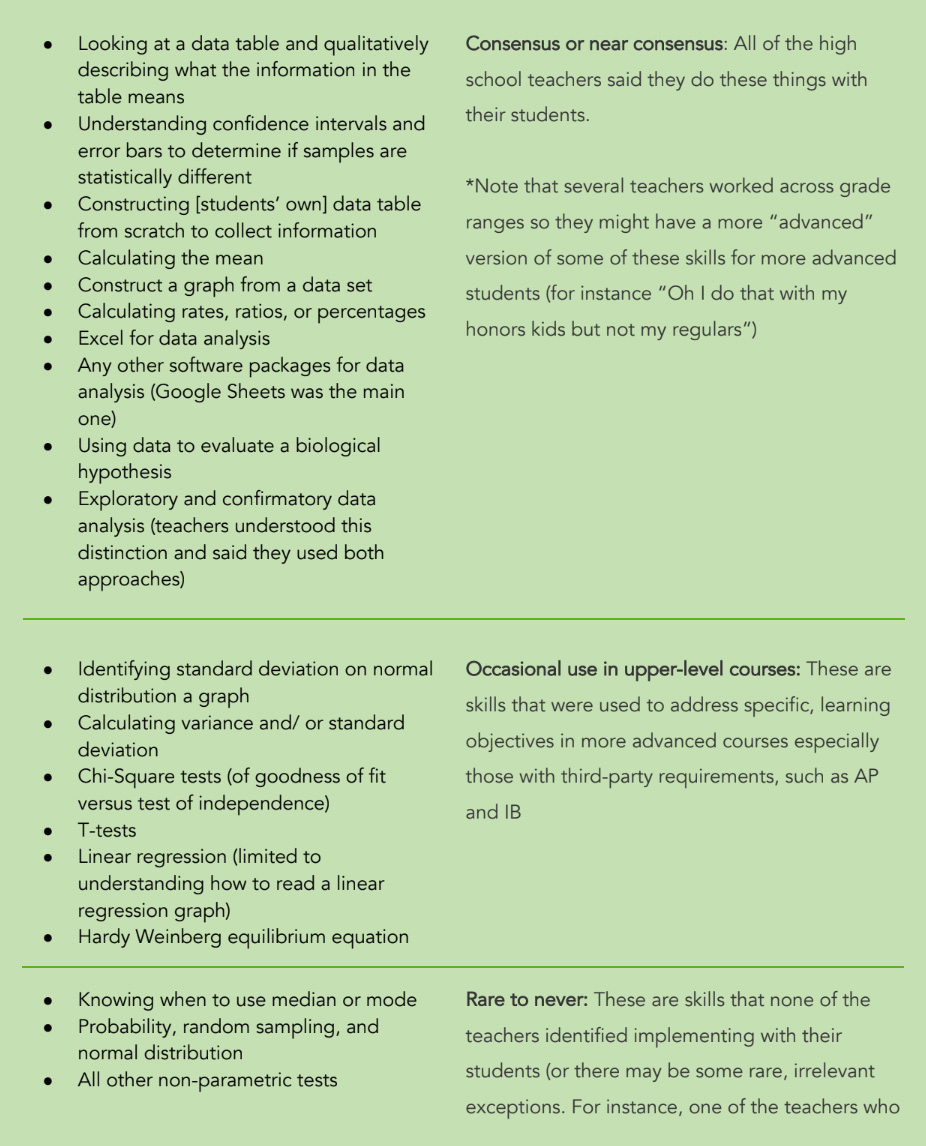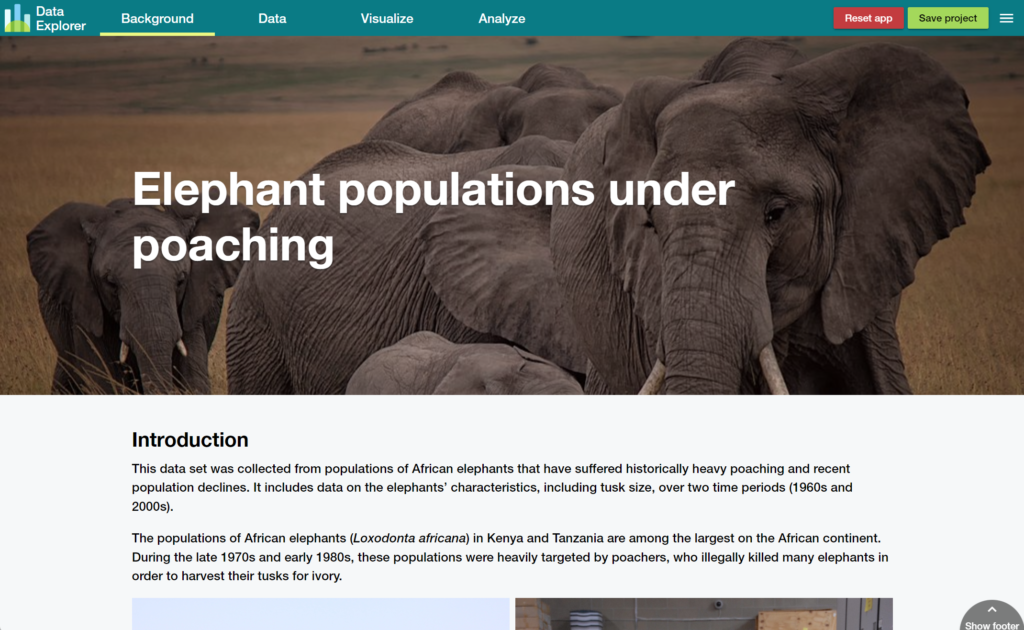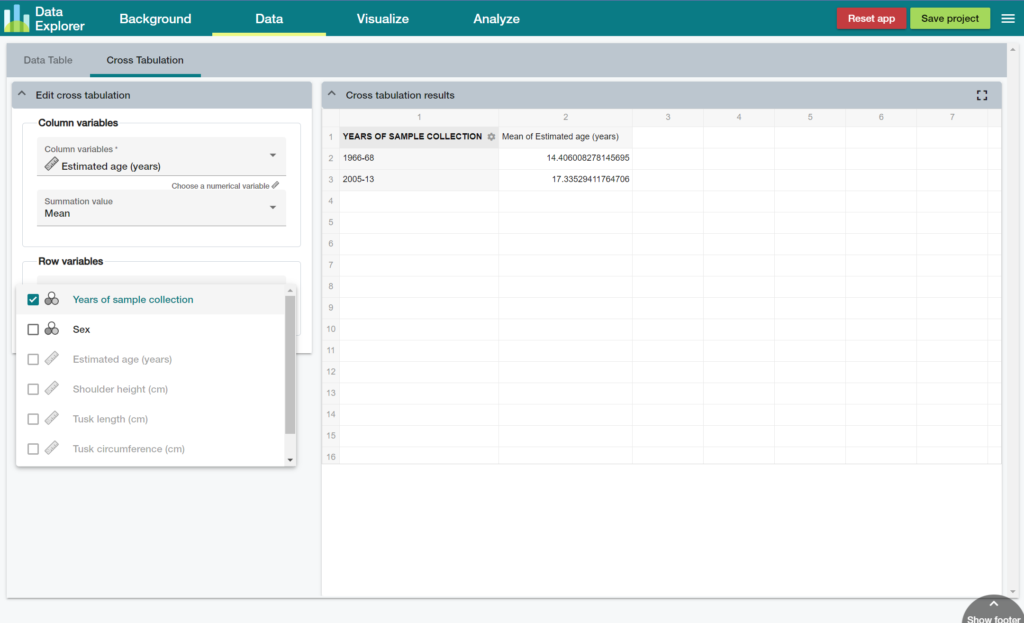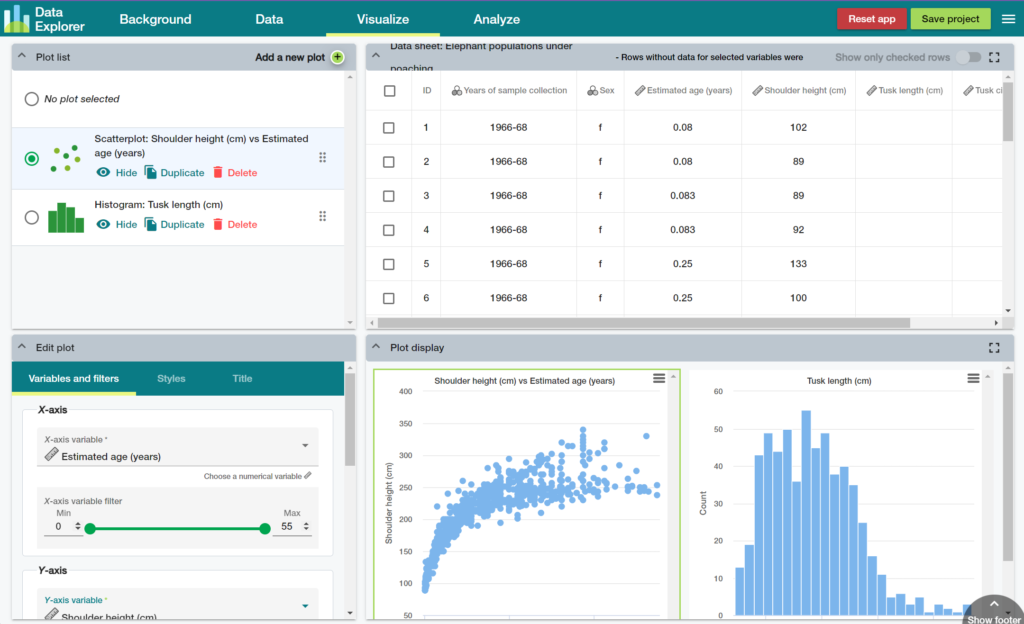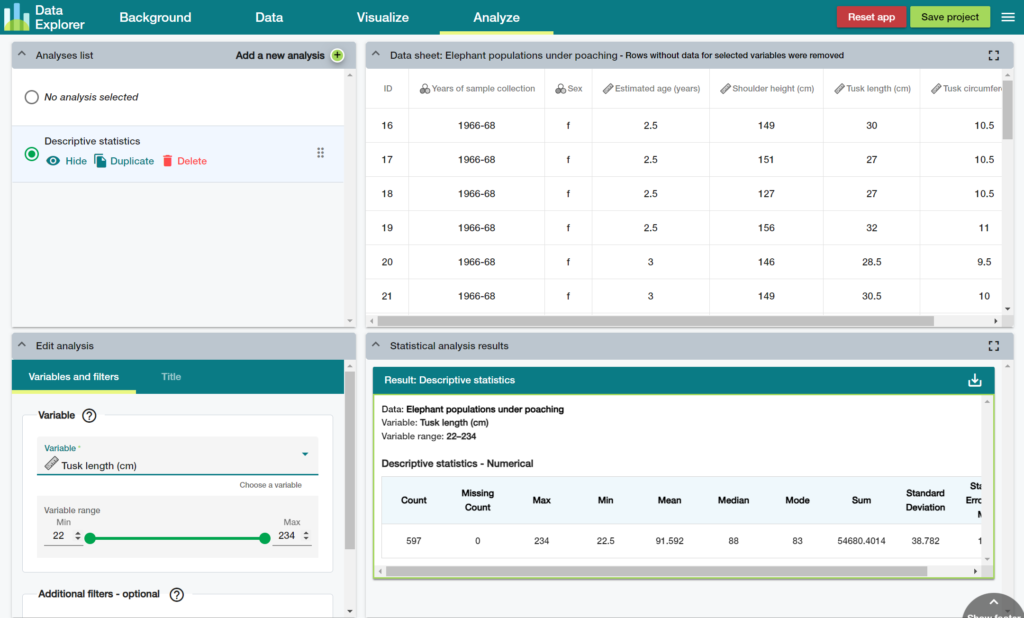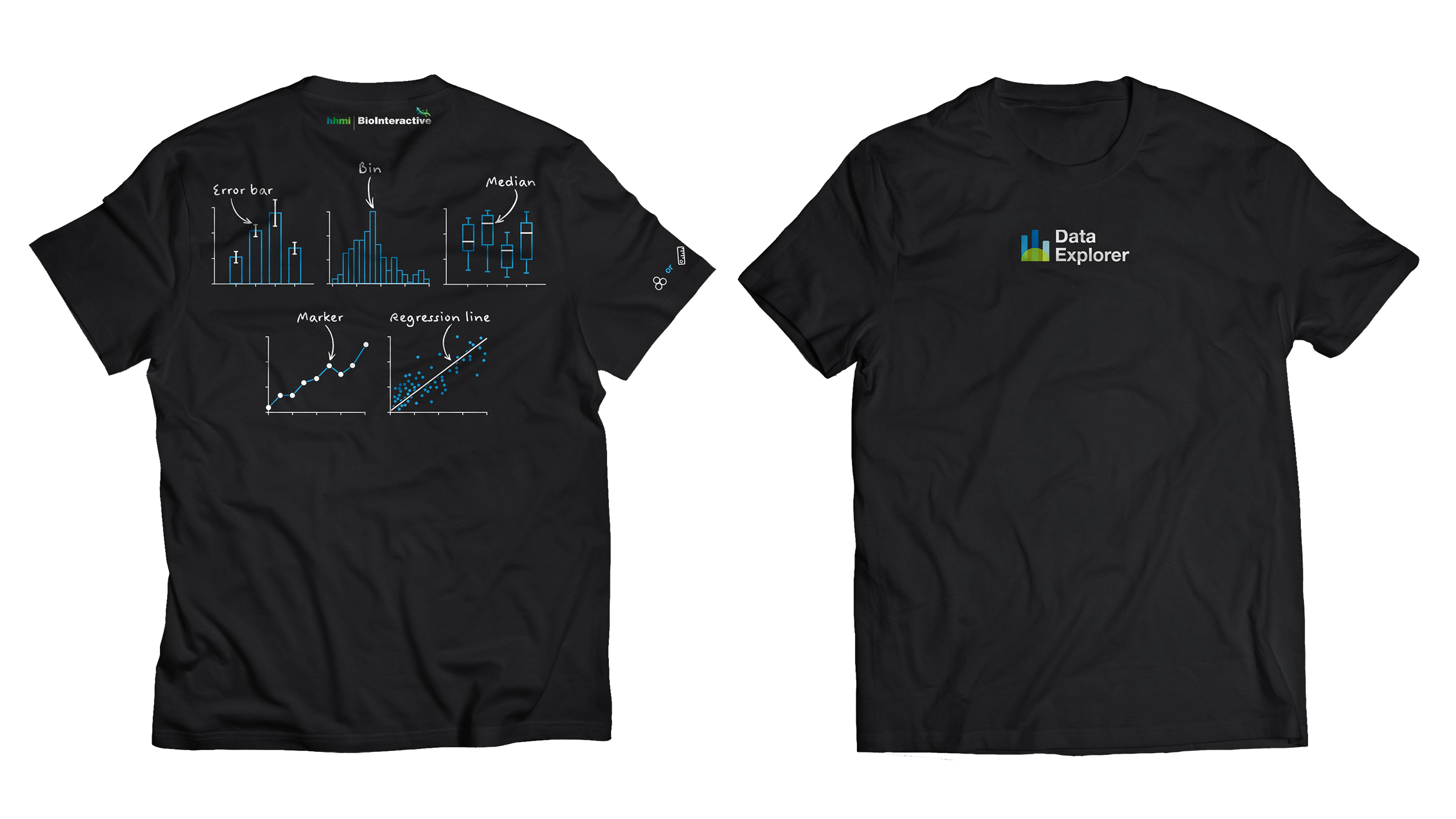”“I really like it for the niche it fills. A lot of online tools are very counterintuitive. This one didn't feel punishing to use.”
—A high school student from a field test
My roles
- Product owner
- Content lead
- Product design
- Interaction design
- Visual design
- UX research
- Illustrator
- Animator
Intended audience
Background
Empathize & Define
”"There's such a gap between students who can evaluate figures and those who can't."
—Undergraduate biology teacher
”"We do not have many opportunities to practice quantitative skills."
—Undergraduate biology teacher
”"I don’t want students just pushing buttons and getting magic answers."
—High school biology teacher
”"I want something where I can load in the data set easily...something with a super simple interface so they don’t get bogged down in the tech details. I do think when stat tests are too easily accessible in a software package, it encourages the students to just throw it in and not think critically about the test they are setting up and why they are running it."
—Undergraduate biology teacher
”"I used to run stats workshops at NABT and NSTA. The lack of fundamental understanding of statistics by high school teachers is widespread."
—Colleague, content developer
User problems
Goals
- Establish a baseline understanding of the obstacles
- Lower the barrier of teaching quantitative skills in biology courses
- Enhance the students’ interests and performance in data analysis
Ideate
High level user flow
Wireframe
Minimum viable product
More UX research
- Collaborated with our evaluation director, Marjee Chmiel, PhD, three focus groups were conducted in order to surface how teachers talk about teaching statistics to high school life science students.
- We wanted to better understand teachers’ needs, possibilities, challenges, obstacles, and opportunities when it comes to integrating quantitative skills in high school biology and environmental science.
- The minimum viable product was shared before the focus group to set the context.
Findings: Teachers jobs-to-be-done
- Teachers want to increase data literacy among students
- Teachers need to meet third-party standards
- When it comes to learning statistics, most teachers were auto-didacts
- Developing a conceptual understanding is of primary importance
- Relative consistency in statistical skills currently taught
- Using statistics to arrive at conclusions provides opportunities for students to have greater ownership over what they learn in biology.
- The most interesting data for students is the data they generated themselves.
- Lack of compelling student resources
- Lack of data sets
- Keep it “low tech”
Final build
Exemplary changes
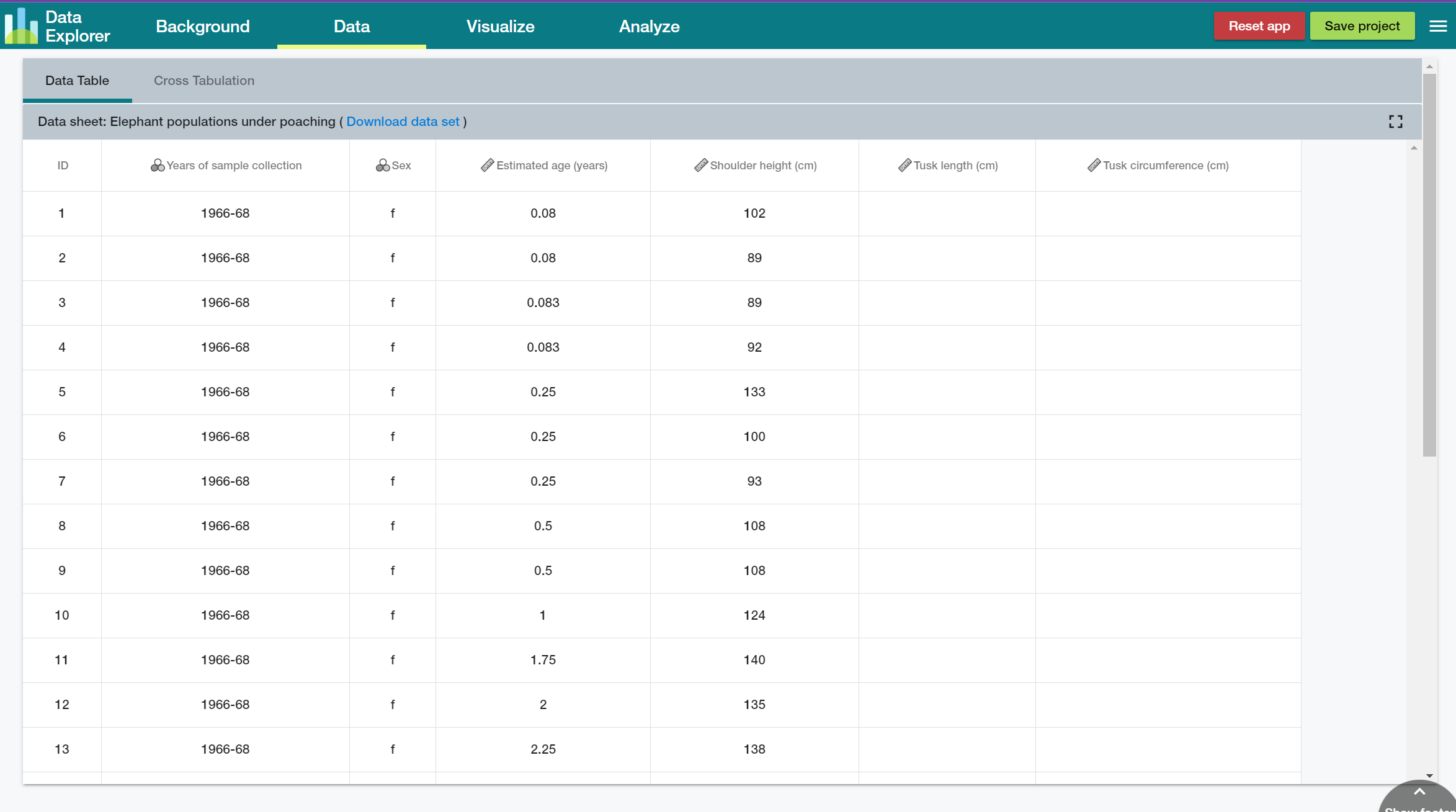
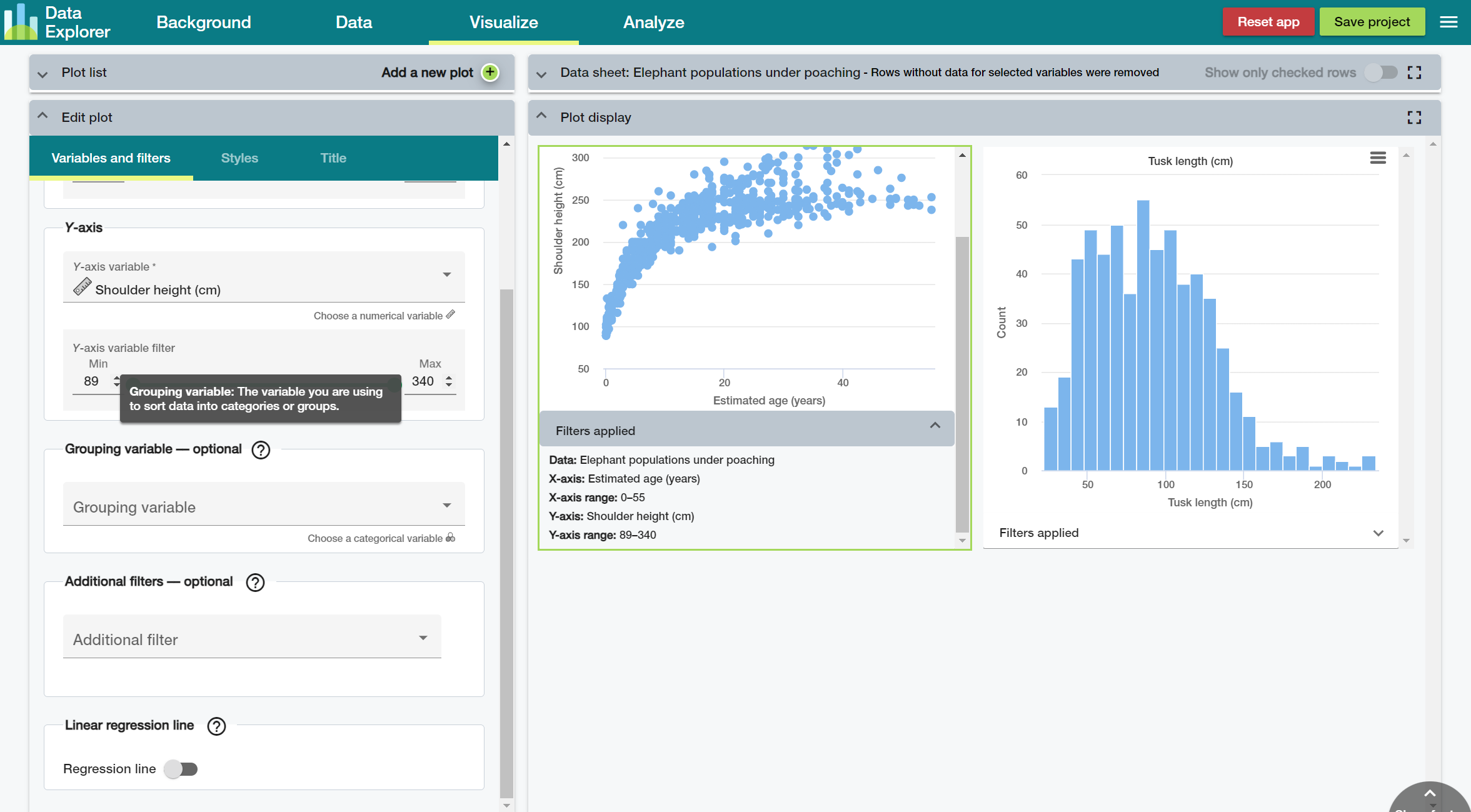
Retrospective
- We performed a field test after the resource is published and received overwhelmingly positive feedback from the educators and students.
- This is the first complex statistical “tool” published by our group and has been used by many educators together with other resources.
- After the development phase started, we took some time to do more UX research to further understand the problem and the users’ needs, which helped us make some major decisions, and minimized the time spent discussing internally. There was doubt about the value of the focus group initially but it paid off in the end.
- Do the discovery as early as possible.
- Different stakeholders may have different interest on each aspect of the project. It would have been nice to have established a way to prioritize different requests/interests.
